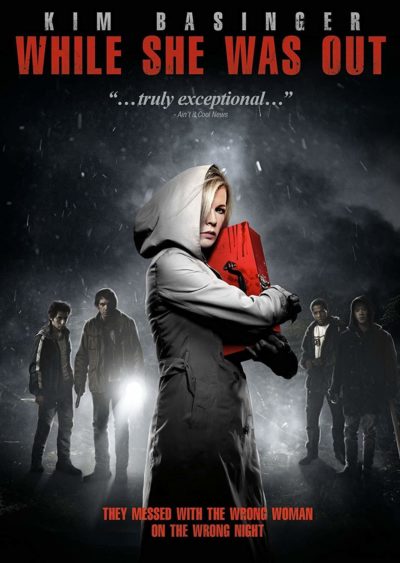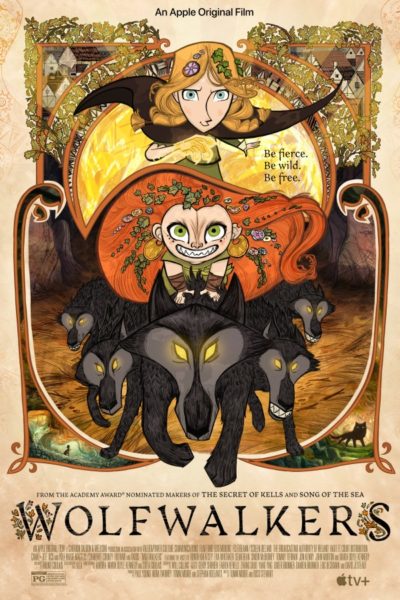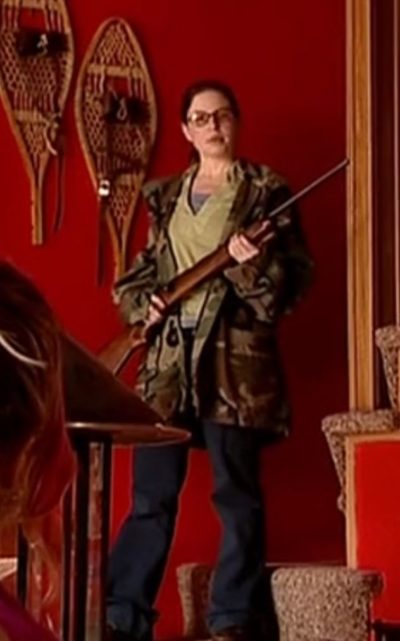Literary rating: ★★★
Kick-butt quotient: ☆☆☆☆
 This dystopian future takes place after the United States of America is no longer united, having fragmented into a group of disparate regions that exist in an uneasy piece with each other. The heroine is 14-year-old Caroline, who lives in a remote part of the Appalachians, her town loosely affiliated to the People’s Republic of Virginia. She’s a scout, and one day encounters forces from the Democratic Alliance. The population of her village who escape, head towards the state capital of Warrenville, pursued by the invading army. On the way, Caroline begins to come into startling abilities which were literally injected into her as a small child.
This dystopian future takes place after the United States of America is no longer united, having fragmented into a group of disparate regions that exist in an uneasy piece with each other. The heroine is 14-year-old Caroline, who lives in a remote part of the Appalachians, her town loosely affiliated to the People’s Republic of Virginia. She’s a scout, and one day encounters forces from the Democratic Alliance. The population of her village who escape, head towards the state capital of Warrenville, pursued by the invading army. On the way, Caroline begins to come into startling abilities which were literally injected into her as a small child.
The collapse of the US is a concept which seems considerably more relevant now, than when the book originally came out in 2014; I was surprised to discover that it takes place several centuries into the future, rather than… oh, next Tuesday. This is the element which I think I found most interesting. While the story is a real page-turner, and I enjoyed it at the time, it’s one where I found myself stumbling into plot-holes when it came to writing the review. For instance, if you can get superpowers by syringe, why are there less than a handful of people so enhanced? I’d have expected the authorities to be all over that kind of thing, in particular the military. Instead, it seems almost to be like a post-apocalyptic version of winning the lottery.
Similarly, the way in which Caroline leads the refugees to Warrenville would have made more sense if she’d come into her powers first. That would plausibly help turn the teenager into a Joan of Arc-like figure. Instead, it seems rather contrived the way adults – even the fiercely independent and survivalist Republicons – defer to her, for no particular reason beyond Caroline being the heroine of the book. However, if you can get past that (and again, I didn’t really think about them while I was reading it), then you should be able to enjoy a fast-paced surge of a book, which tends to have something going on, more often than not.
Lindsey certainly doesn’t pull his punches. On more than one occasion a character meets an unexpected and brutal end, and this gives a sense of danger for the rest of them. Well, except Caroline, of course, who is fully engulfed in Heroine Armour, naturally. Still, there is a genuine character arc here, as her relatively pastoral existence is turned completely upside down, and she’s forced into maturity over the course of just a few days, after losing everything she knows. I would be tempted to read the next two volumes, just to see where the story goes: for instance, I’m curious about what happened to Crockett’s gang of Republicons, who just wandered off in the middle of the story. Though I’d need more of a “special offer” for the omnibus edition than the 49-cent saving it provides over buying parts two and three separately!
Author: Ernie Lindsey
Publisher: JCL Publishing, available through Amazon, both as a paperback and an e-book
Book 1 of 3 in the Warchild series.





 The above – though expressed rather more bluntly! – was Chris’s reaction to the opening scene, in which Nanisca (Davis) leads her female troops, the Agojie, in the ambush of slavers from the neighbouring Oyo tribe. The Oyo are rivals to the Kingdom of Dahomey, under King Ghezo (John Boyega), who relies on Nanisca and the Agojie to protect his territory, and it’s getting closer to all-out war. The Agojie get a new recruit, Nawi (Mbedu), whose father drops her off at the palace gate, because of her refusal to accept an arranged marriage. Nawi turns out to have a very close connection to Nanisca, but also ends up captured by the Oyo and needs to escape before being sold to Brazilian slavers.
The above – though expressed rather more bluntly! – was Chris’s reaction to the opening scene, in which Nanisca (Davis) leads her female troops, the Agojie, in the ambush of slavers from the neighbouring Oyo tribe. The Oyo are rivals to the Kingdom of Dahomey, under King Ghezo (John Boyega), who relies on Nanisca and the Agojie to protect his territory, and it’s getting closer to all-out war. The Agojie get a new recruit, Nawi (Mbedu), whose father drops her off at the palace gate, because of her refusal to accept an arranged marriage. Nawi turns out to have a very close connection to Nanisca, but also ends up captured by the Oyo and needs to escape before being sold to Brazilian slavers. There are a couple of points to note going in. This was one of “12 Westerns in 12 months”, a project run by the director during 2020. It also proudly pronounces itself as the first ever Western feature to be shot entirely on an iPhone. Both of these do lead to limitations. The sheer speed involved obvious has an impact, and I can’t help wondering if a more measured approach would have been better for the end product. As for the iPhone… Well, on the plus side it looked perfectly watchable on my 49″ television, especially the outdoor scenes. However, the indoor sequences seemed almost
There are a couple of points to note going in. This was one of “12 Westerns in 12 months”, a project run by the director during 2020. It also proudly pronounces itself as the first ever Western feature to be shot entirely on an iPhone. Both of these do lead to limitations. The sheer speed involved obvious has an impact, and I can’t help wondering if a more measured approach would have been better for the end product. As for the iPhone… Well, on the plus side it looked perfectly watchable on my 49″ television, especially the outdoor scenes. However, the indoor sequences seemed almost 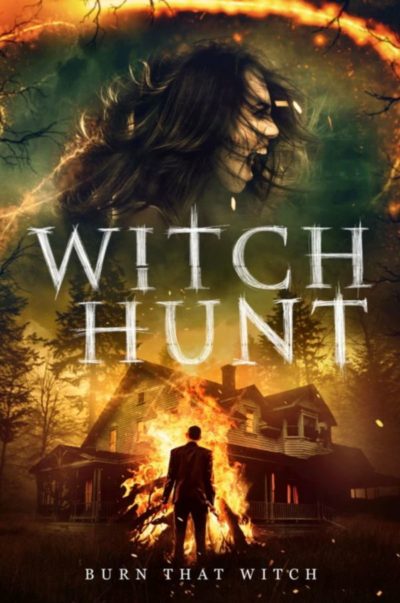 This is set in the everyday world – but with one major tweak. Witchcraft exists, and has been outlawed in the United States by the 11th amendment. Now, government agents from the BWI seek out witches, using tried and true methods from the middle ages (the “sink test” is exactly what it sounds like), and punish those found or suspected to be practicing witchcraft. But those opposed to this have set up an “underground railroad” to smuggle the targets over the boarder to Mexico. Teenage girl Claire (Adlon) is part of one such family, courtesy of her mom Martha (Elizabeth Mitchell); Dad is out of the picture. Claire is rather ambivalent about their activism, since she just wants to fit in at school. But the arrival of Fiona (Cowen) and her little sister, siblings whose mother was burned at the stake, forces Claire out of her professed neutrality,. Especially as the investigation of the unrelenting BWI Agent Hawthorne (Camargo) gets closer to home.
This is set in the everyday world – but with one major tweak. Witchcraft exists, and has been outlawed in the United States by the 11th amendment. Now, government agents from the BWI seek out witches, using tried and true methods from the middle ages (the “sink test” is exactly what it sounds like), and punish those found or suspected to be practicing witchcraft. But those opposed to this have set up an “underground railroad” to smuggle the targets over the boarder to Mexico. Teenage girl Claire (Adlon) is part of one such family, courtesy of her mom Martha (Elizabeth Mitchell); Dad is out of the picture. Claire is rather ambivalent about their activism, since she just wants to fit in at school. But the arrival of Fiona (Cowen) and her little sister, siblings whose mother was burned at the stake, forces Claire out of her professed neutrality,. Especially as the investigation of the unrelenting BWI Agent Hawthorne (Camargo) gets closer to home.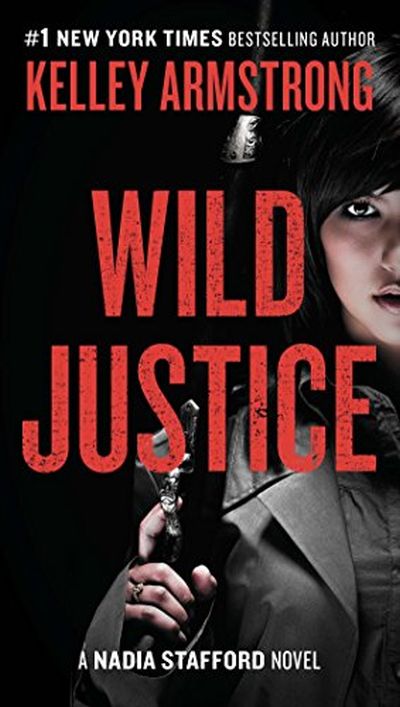 That’s what happened here, about a month ago,with Quinn wanting to move in the direction of engagement and marriage and Nadia not willing to, leading to a messy breakup that left him very hurt and her “feeling like [vulgarism deleted].” :-( On top of that stress, when this book opens, she’s in rural Michigan on a job (of the kind that she doesn’t advertise). That quickly results, though through no fault of her own, in a traumatic event which has her on the point of meltdown. But before long, she’s in for a moral and emotional ordeal which will make her present distresses look relatively mild.
That’s what happened here, about a month ago,with Quinn wanting to move in the direction of engagement and marriage and Nadia not willing to, leading to a messy breakup that left him very hurt and her “feeling like [vulgarism deleted].” :-( On top of that stress, when this book opens, she’s in rural Michigan on a job (of the kind that she doesn’t advertise). That quickly results, though through no fault of her own, in a traumatic event which has her on the point of meltdown. But before long, she’s in for a moral and emotional ordeal which will make her present distresses look relatively mild.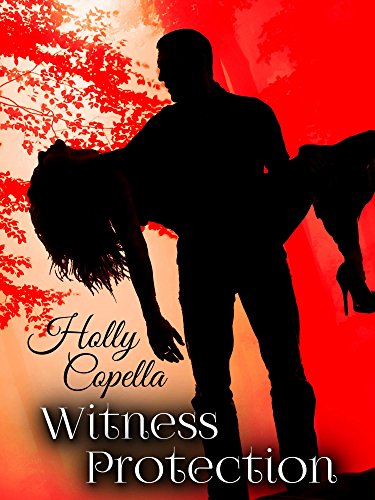 This is one of those books where the cover (right) feels at odds with the synopsis: “After witnessing an execution, a resourceful young woman attempts to disappear while being pursued by a hitman and a handsome federal agent.” Having read the book, the reality sits somewhat uncomfortably in the middle. It might have been better if the author had committed to writing either an action novel or a romance; the combination of them here is awkward and clunky. Naturally, my preference was for the former. But it seems that every time the book got into a rhythm there, the heroine would start lusting after one (frankly, close to all) of the male characters, and the energy would be derailed.
This is one of those books where the cover (right) feels at odds with the synopsis: “After witnessing an execution, a resourceful young woman attempts to disappear while being pursued by a hitman and a handsome federal agent.” Having read the book, the reality sits somewhat uncomfortably in the middle. It might have been better if the author had committed to writing either an action novel or a romance; the combination of them here is awkward and clunky. Naturally, my preference was for the former. But it seems that every time the book got into a rhythm there, the heroine would start lusting after one (frankly, close to all) of the male characters, and the energy would be derailed.